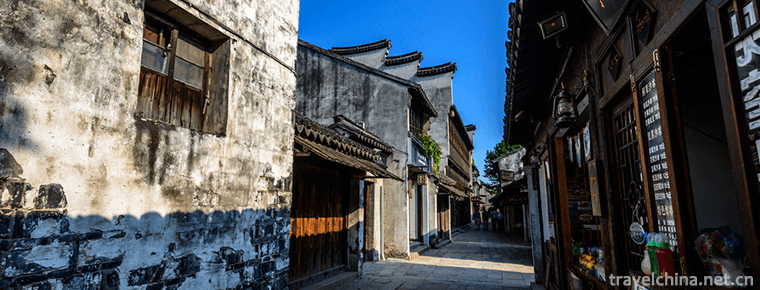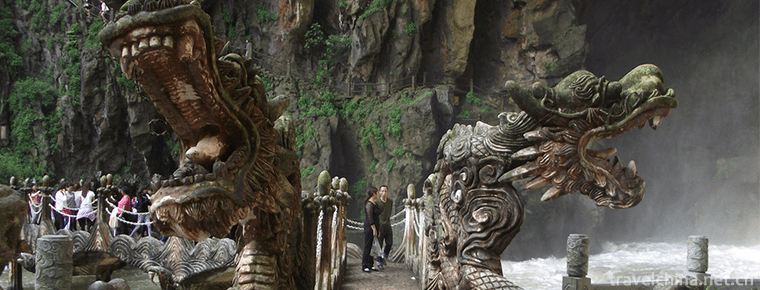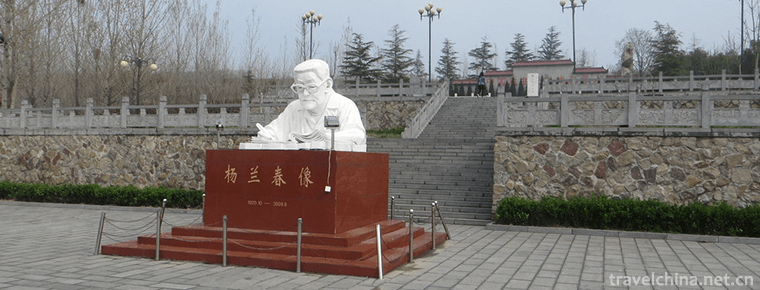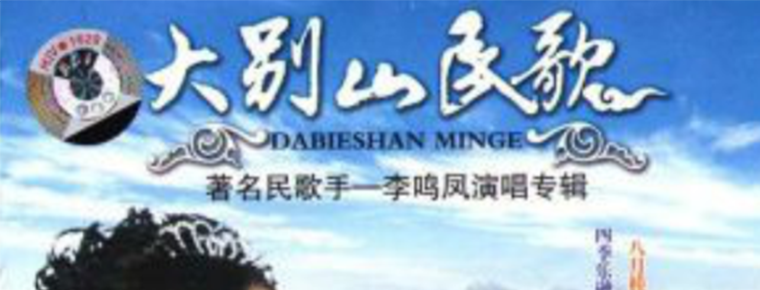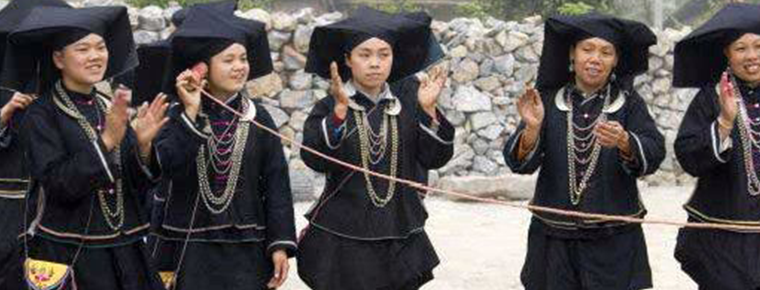The situation of Chinese embroidery in various historical dynasties
The situation of Chinese embroidery in various historical dynasties
the warring states
The origin of Chinese embroidery is very early. It is said that "Shun ordered Yu to embroider multicolored embroidery". It was developed in the Xia, Shang, Zhou Dynasties and Qin and Han Dynasties. From the early unearthed textiles, embroidery products can be seen. The early embroidery relics show that Zhou Dynasty was simple and rough; the Warring States period was becoming more and more exquisite. In this period, the embroidery used braid embroidery, also known as braid embroidery and lock embroidery. The embroideries unearthed from tomb No.1 of the Warring States period at Mashan silicon factory in Jiangling, Hubei Province, include pair Phoenix embroidery, dragon pattern embroidery, flying phoenix pattern embroidery, Dragon Phoenix tiger pattern embroidery and Zen clothes. All of them were embroidered with braided strands without painting and color filling. This indicates that the embroidery technology at this time has developed to a very mature stage.
Han dynasty
In the Han Dynasty, embroidery began to show the beauty of art. Because of the prosperity of economy and various industries, the silk weaving industry is particularly developed. When the rich rise and form a new consumer class, embroidery has become popular among the people, and the handicraft embroidery is becoming more and more professional. Judging from the unearthed objects, the embroidery is exquisite, and the patterns are diverse, presenting a beautiful scene, which can be regarded as an excellent tradition for this national craft.
In the book Lun Heng written by Wang Chong in the Han Dynasty, it was recorded that "the embroidery of Qi county was the same as that of constant women", which fully illustrated the popularity of embroidery techniques and production at that time. Because of the maturity of embroidery technology, the Han Dynasty has virtually begun to distinguish the level and type of people using embroidery. Although embroidery was created by the working people in labor, most of the working people could not afford to enjoy high-grade silk embroidery. Ordinary working people can only use simple embroidery technology to embellish clothing, shoes, hats and other real goods in life.
The most representative is the embroidery fragments unearthed from Mawangdui Han tomb in Changsha, Hunan Province. Although they have been buried underground for thousands of years, they are still exquisite when unearthed. The color matching and needlework are applied properly, which makes us modern embroidery workers blush. The embroidery craft of Han Dynasty is also very developed in Shandong Province, and has already become the common labor of folk women. Sichuan embroidery in Chengdu, Sichuan was also very exquisite in the Han Dynasty. It can be seen that embroidery was very popular in the Han Dynasty.
Tang dynasty
Embroidery was widely used in the Tang Dynasty, and there were new developments in needling techniques. Embroidery is usually used as the decoration of clothing supplies. It is exquisite in workmanship and gorgeous in color. It is reflected in the literature and poetry of the Tang Dynasty. For example, Li Bai's Poems "jadeite gold thread, embroidered into song and dance clothes", Bai Juyi's poem "rich women in Red Mansions, gold thread stabbing Luo ru", etc., are all eulogizing embroidery. In addition to clothing, embroidery in Tang Dynasty was also used to embroider Buddhist scriptures and statues for religious services. In addition to the traditional braid embroidery since the Warring States period, the needling techniques of Tang Dynasty embroidery included plain embroidery, dot embroidery, and multi fold embroidery. It is also known as Tui Yun embroidery, which is called banzhen embroidery in modern times. It can show different color levels with different depth and depth, which makes the color of the object described magnificent and has a strong decorative effect.
Song dynasty
There were dozens of needling techniques in the Tang and Song Dynasties, and their styles gradually formed different regional characteristics. Embroidery is not only embroidered on clothing, but also developed from flowers and plants on clothing to pure appreciation of embroidery paintings, embroidery Buddhist scriptures, embroidered Buddha statues and so on. According to legend, Wu Zetian ordered more than 400 Buddhist statues to be embroidered to temples and neighboring countries. It can be seen that embroidery of Buddha statues was very popular in the Tang Dynasty.
The Song Dynasty was a period when the development of Chinese manual embroidery reached its peak. No matter the product quality was unprecedented, especially in the creation of pure aesthetic art embroidery, it could be called the second best. The development of manual embroidery in Song Dynasty was due to the government's encouragement and promotion at that time. According to the records of official officials in the history of Song Dynasty, the Palace Chinese embroidery academy compiled embroidery. During the reign of Emperor Huizong, embroidery was divided into landscapes, pavilions, figures, flowers and birds. As a result, famous embroidery workers came forth in succession, and painting developed to the highest level. From practicality to artistic appreciation, calligraphy and painting were brought into hand-made embroidery to form a unique ornamental embroidery.
The promotion of the imperial court has greatly improved the original manual embroidery technology in several aspects: 1. The "flat needle embroidery" method is rich in changes, and many new needling techniques have been developed; 2. Improving tools and materials, using refined steel needles and hair silk thread; 3. Combining calligraphy and painting art, taking celebrity works as the theme, pursuing painting interest and realm.
Yuan dynasty
Although the ornamental production of Yuan Dynasty embroidery is far less than that of Song Dynasty, it also inherits the realistic embroidery style of Song Dynasty. The Yuan people who came to the Central Plains set up embroidery Bureau and Luo Bureau in all parts of the country. The aesthetic and function of embroidery became more and more artistic. The emergence of Buddhist themes began in the Sui and Tang Dynasties, and the main pattern was baoxianghua. Song embroidery only advocated calligraphy and painting of celebrities, and occasionally embroidered Buddhist statues. In order to deny the first position of Confucianism, Kublai Khan advocated Tibetan Buddhism and revived the worship of Buddhism in the Central Plains.
However, embroidery bureaus all over the country still follow the path of Song people, embroidery celebrities painting and calligraphy or flower sketching, and the work is not as good as the song people. "Qing Mi Cang" said: "Yuan people with a slightly thick thread, needle drop is not dense, between the eyebrows and eyes with ink, no longer refined Song Dynasty!"
the Ming dynasty
The Ming Dynasty was a time when Chinese handicraft was extremely developed. It inherited the fine foundation of the Song Dynasty's embroidery. It kept up with the warm atmosphere of the times and continued to prosper.
The embroidery techniques of Ming Dynasty also showed many characteristics
First, in terms of usage, it was widely used in all walks of life in the popular society, and the production was omnipresent. It became the most popular period of embroidery in Chinese history with the later Qing Dynasty;
Second, in terms of embroidery art, the general practical embroidery works have generally improved in quality, improved materials and skillful techniques, and tend to be quite different from the gaudy and gorgeous fashion of the Song Dynasty; artistic embroidery, inheriting the excellent tradition of song embroidery, can bring forth new inventions, especially in the Ming Dynasty, which has appeared in Ming Dynasty, such as the famous "Lu Xiang Yuan" embroidery of Ming family and individual, which is famous for Shanghai family The "embroidery" works created and invented the combination of painting and embroidery were popular till the Qing Dynasty. This kind of embroidery artists rose in succession and was widely respected by the society, which was also the most popular in the late Ming and early Qing Dynasties.
The third is the derivation of other kinds of embroidery. Originally, embroidery only used silk thread as the material. Since the Ming Dynasty, some people tried to use other materials. As a result, there were penetrating embroidery, hair embroidery, paper embroidery, sticking pile embroidery, embroidery with embroidered yarns, and Pingjin embroidery, which greatly expanded the scope of embroidery art.
The most novel and outstanding embroidery in Ming Dynasty is the sprinkling thread embroidery. Sprinkling embroidery is made by counting the number of double twisted threads and according to the holes of square hole yarn, mainly with geometric patterns, or with velvet main flowers. Sprinkling thread embroidery is the predecessor of Na thread, which belongs to the northern embroidery species. Taking the Miao Xiaojing empress of Ming Dynasty as an example, it is made of 6 kinds of thread and 12 kinds of needling methods, including three ply thread, flannelette thread, twister thread, covered stem thread, peacock feather thread and Flower Clip thread. There are Shandong Lu embroidery, clothing embroidery and Ji thread embroidery belonging to the northern embroidery system.
the Qing dynasty
During the junior high school period of Qing Dynasty, the country was prosperous and the people's life was stable. The embroidery technology was further developed and improved. The embroidered images changed greatly and were full of high realism and decorative effect. Moreover, because of the harmonious use of colors and the like to use gold needles and pad embroidery techniques, the embroidery patterns had a wide range of subjects, vivid shapes, vivid images, unique colors, beautiful and elegant, calm and solemn Artistic effect. It reflects the ingenuity and taste of designers and users, and reflects the rich connotation and artistic value of embroidery in Qing Dynasty.
There are two other outstanding achievements of embroidery in Qing Dynasty
First, local embroidery schools have sprung up like mushrooms. In addition to the "four famous embroidery", Suzhou embroidery, Guangdong embroidery, Shu embroidery and Hunan embroidery, there are also Beijing embroidery and Lu embroidery. Each of them has established its own characteristics and formed a situation of competing for wonders and beauties.
Second, the late Qing Dynasty absorbed the advantages of Japanese painting, and even integrated Western painting ideas into embroidery. The "imitation embroidery" initiated by Shen Shou in Suzhou, Jiangsu Province, injected new blood and new features into traditional embroidery.
The Republic of China
The embroidery of the Republic of China has a very small amount in the world. Because of the corruption of the late Qing government, the people's life has not been improved, and then the new national government came into power. The new government lacks the ability to clean up the mess politically, and the empty Treasury is unable to quickly lead the people to extricate themselves from the edge of hardship. After so many years of bullying by foreign powers and the scuffle of internal warlords in a huge country, coupled with the frenzied accumulation of wealth by the four families of the national government, people's lives are indeed in dire straits. Artists are also wandering and struggling to solve the survival problems, and they have no time to take into account the amateur life and the pursuit of artistic creation. As a result, the development of embroidery in the Republic of China almost stopped, and the embroidery works that we can see are closely related to our daily life. From the perspective of art and appreciation, the exquisite embroidery art is very rare, and the works collected as embroidery are rare.
The Cultural Revolution
After liberation, people's life has just stabilized, and the pursuit of material and spiritual only meets the minimum needs. The development trend of the country and the international situation are not optimistic. The spirit of the times and the social situation partly solved the people's lack of urgent construction and development needs in the areas of food and clothing. Cultural and artistic creation has become the main goal of spare time life. A large number of excellent embroidery works have emerged at the historic moment. The use and practice of embroidery needle technique has also been greatly improved. The innovation and maturity of embroidery technology has been improved to another new level in history On the level of.
Although the handicraft embroidery reached a new historical high point in the early period of liberation, due to the limitation of national situation and various conditions, the theme selection of all embroidery works basically has distinctive characteristics of the times. The themes of works are limited to describing the construction of the country, political figures or works highlighting the political life and political spirit of the people in the early period of liberation.
From 1966 to 1976, embroidery suffered another ten-year Cultural Revolution. The national economic construction stopped, and the embroidery industry stopped without exception. Innovation and creation were almost zero. During this period, few new works came out, which was also related to politics.
From the beginning of liberation to the end of the cultural revolution, it was another historical period of embroidery. As time goes by, these small amount of embroidery with single theme and excellent craftsmanship can be used as a hot spot of embroidery collection. I believe that there is a great space for value improvement. Investors who have a hobby in embroidery collection can pay more attention to the opportunity.

-
Nanxun ancient town Scenic Area
Nanxun Ancient Town is located in Nanxun District of Huzhou City, at the junction of Jiangsu, Zhejiang and Shanghai provinces. .
Views: 221 Time 2018-12-07 -
Longgong Scenic Area of Anshun City
Located in the southern suburb of Anshun City, Longgong Palace is adjacent to Huangguoshu Scenic Area and 116 kilometers away from Guiyang City, the provincial capital..
Views: 129 Time 2018-12-12 -
Chaoyanggou tourist attraction
Chaoyanggou Scenic Spot in Hebei Province is one of the 30 most beautiful scenic spots in China, including AAAA-level scenic spots, National Geological Forest Park, National Rural Tour Demonstration S.
Views: 107 Time 2019-01-05 -
Dabie Mountain Folk Songs
Dabie Mountain folk song is a traditional folk song widely circulated in the west of Anhui Province. With the unique regionality of the interdependence of mountains and rivers.
Views: 247 Time 2019-04-23 -
Napo Zhuang Folk Songs
Napo Zhuang, also known as "Heiyizhuang", is a unique ethnic group among the Zhuang people. It calls itself "Min", "Zhong", "Ouch". Now there are about 518,000 .
Views: 119 Time 2019-06-06 -
Chaohu University
Chaohu College (Chaohu University), located in Chaohu, Hefei, Anhui, Chaohu half soup hot spring health resort, is a Anhui provincial full-time undergraduate institutions, local application oriented i.
Views: 178 Time 2019-11-08 -
China Foreign Affairs University
China Foreign Affairs University is a small scale, high level and distinctive foreign ministry's sole institution directly under the guidance of serving the cause of China's diplomacy and cultivating .
Views: 170 Time 2019-11-29 -
Gongga Mountain
Gongga Shan, also known as Minya Konka, is located in the south of Kangding, Sichuan Province. It is the main peak of Daxue mountain. There are 45 peaks with an altitude of more than 6000 meters. .
Views: 117 Time 2020-10-13 -
Neijiang economy
In 2019, the GDP of Neijiang City will reach 143.33 billion yuan, an increase of 7.8% over the previous year in terms of comparable prices. Among them, the added value of the primary industry was 24.050 billion yuan, an increase of 2.9%; the added value.
Views: 358 Time 2020-12-16 -
Nanchong hydrology
Nanchong is rich in precipitation. The average annual precipitation is 1000 mm, excluding evaporation, the annual total water is about 4.191 billion cubic meters, and the average annual runoff depth is about 313 mm. The distribution of runoff depth is generally.
Views: 349 Time 2020-12-17 -
Yibin water resources
Yibin city produces 614500 cubic meters of water per square kilometer per year. In addition to the amount of water from various rivers in the city, the city has a total annual water volume of 242.84 billion cubic meters, and the average annual water occupatio.
Views: 359 Time 2020-12-18 -
Dazhou culture
Baqu culture refers to the fact that Dazhou city is located in Bashan canal and belongs to Badi in ancient times. The chapter of Baqu customs is listed in the ancient book Taiping Huanyu Ji thousands of years ago; the second refers to the unique cultur.
Views: 365 Time 2020-12-20
